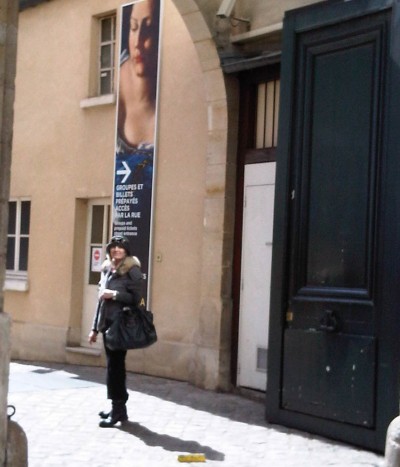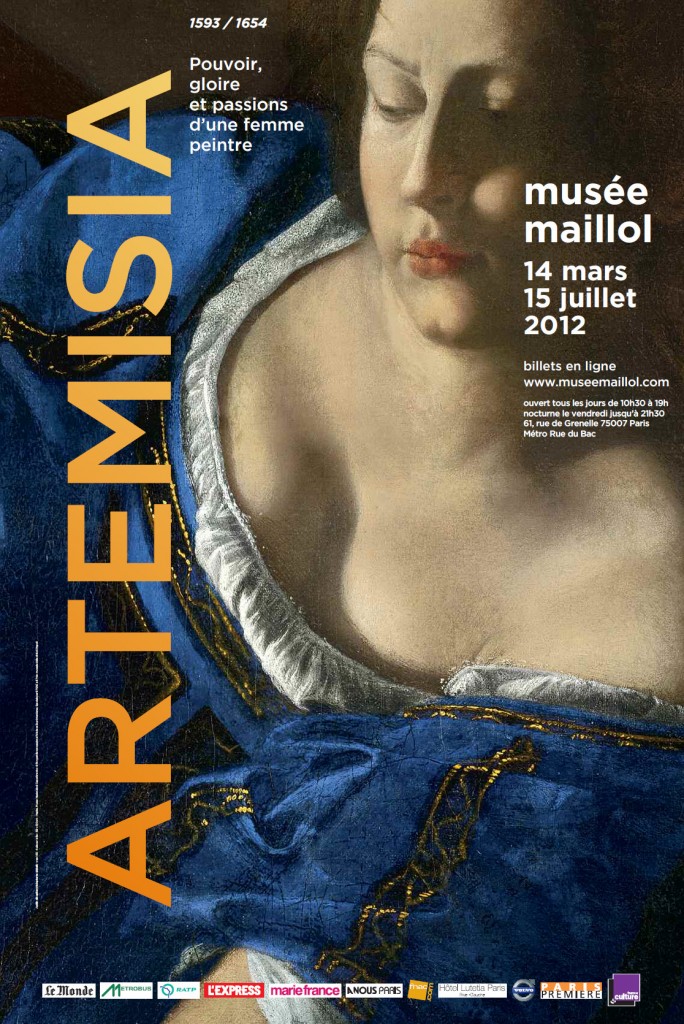Artemisia… Power… Glory… and Passion…
A… woman…
Of power… passion… glory…
A… painter… in the… “Seicento“…
Known… for her colourful lifestyle…
Her… freedom…
Free spirited… she was admired in all the courts of Europe…
Artemisia Gentileschi…
An italian… born in Rome… (8, July 1593-1652)…
Baroque… painter…
Considered… one of the most accomplished and magnificent painters in the “après”… post-Caravaggio period.
The first female painter… to become a member of the “Accademia di Arte del Disegno” in Florence.
Getting our invitation tickets from the foyer of the Musée Maillol…”dans le 7e arrondissement”.. we moved to the impressive first floor where… Artemisia‘s major paintings were exhibited… later climbing up to the second floor… where we admired the subsequent “tranche” of her works.
The eldest daughter… of the Tuscan painter… also her mentor and teacher… her father Orazio Gentileschi… who introduced her to painting in his workshop where her considerable talent was discovered.
She… like her father… was influenced and inspired by… Caravaggio…
 Nevertheless… her paintings were very different from her fathers’, as her work was highly naturalistic… instead of idealistic.
Nevertheless… her paintings were very different from her fathers’, as her work was highly naturalistic… instead of idealistic.
Artemisia… excelled in an era… where women were not considered to have the intelligence or equality… to achieve the highest echelons in Art.
Our artist had to deal with the…
“traditional attitude and psychological submission to this brainwashing and jealousy of her obvious talent”.
By exhibiting intelligence and maturity in dealing with that situation… she gained a great deal of respect and recognition for her magnificent art.
The first great work by the young seventeen year old Artemisia… was the “Susanna e i Vecchioni” (Susanna and the Elders)… displayed at the Pinacoteca Nazionale in Bologna… clearly exhibits her eloquence in assimilating the realism of Caravaggio.
Since she herself was a victim of rape… by her father’s assistant… and had to endure a public trial… which had traumatised her and had a dramatic effect on her work… this is a painting showing the traumatic sexual assault of a woman by two elders.
Her huge painting on canvas… the “Giuditta decapita Oloferne“… (Judith beheading Holofernes)… c. 1612… displayed at Capodimonte Museum of Naples… made us squirm with shock and horror… for the brutality and violence portrayed.
Having married a modest artist… Pierantonio Stiattesi… the couple moved to Florence where Artemisia became a successful court painter and enjoyed the patronage of the Medici family.. as well as Charles I.
It was during this interim that she painted the famous “Madonna col Bambino“… (The Virgin and Child)… currently displayed in Spada Gallery… Rome.
 Roberto Longhi… a highly esteemed Italian critic… who was the author of a 1916 essay named “Gentileschi padre e figlia“… (Gentileschi father and daughter)… described Artemisia as…
Roberto Longhi… a highly esteemed Italian critic… who was the author of a 1916 essay named “Gentileschi padre e figlia“… (Gentileschi father and daughter)… described Artemisia as…
“The only woman in Italy who ever knew about painting, colouring, doughing and other fundamentals”. He continued by commenting on “Judith Slaying Holofernes“… “There are about fifty-seven works by Artemisia Gentileschi and ninety four percent (forty-nine works) feature women as protagonists or equal to men”.
Other works… displayed at the exhibition… such as “Jael and Sisera“, “Judith and her Servant“, and “Esther”… their characters all intentionally lacked typical feminine traits, such as sensitivity… weakness… femininity… portraying instead masculine qualities of courage, rebelliousness, and powerful personalities, to the extent that a 19th century scholar commented on her “Magdalene“…
“no one would have imagined that it was the work of a woman. The brush work was bold and certain, and there was no sign of timidness.”
Artemisia… was well aware of the low opinion female artists were viewed by men… therefore she cleverly portrayed her works with defiance and power… due to her experiencing rape…
However… some art historians hinted that the reason she kept returning constantly to violent subject matter in her work…. was that she was shrewdly manipulating the notoriety from her rape trial… in order to cater to sexually-charged, female-dominant art… for a lucrative niche market for powerful male patrons.
We were awed and impressed by “Artemisia” at the Musée Maillol… fascinated by her beauty and power of seduction…
Her love letters… poignantly displayed in the exhibition in her own handwriting… to her lover Francesco Maria Maringhi… a Florentine aristocrat… shed light on Artemisia‘s complex and highly emotional personality.
The five letters… written in Rome… were long… full of love… passion… and nostalgia… but also included profound and detailed description of her work and interests.
A woman… of great talent…
 An artist… of…
An artist… of…
Power and glory…
A woman… painter…
In the… Seicento…
Artemisia Gentileschi…
A… woman…
To… be…
Accoladed…
Celebrated…
“Una donna… straordinaria”…
a.



We are great admirers of “Lettre de Paris”, we were enthralled again by your post on this amazing artist Artemesia.